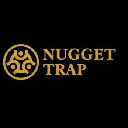-
 bitcoin
bitcoin $114684.631706 USD
-0.87% -
 ethereum
ethereum $4228.677447 USD
1.58% -
 bnb
bnb $1294.880693 USD
-1.16% -
 tether
tether $1.000819 USD
-0.02% -
 xrp
xrp $2.605138 USD
2.79% -
 solana
solana $209.908690 USD
5.89% -
 usd-coin
usd-coin $0.999903 USD
-0.03% -
 dogecoin
dogecoin $0.213423 USD
2.93% -
 tron
tron $0.322721 USD
-0.10% -
 cardano
cardano $0.727247 USD
3.66% -
 hyperliquid
hyperliquid $42.339456 USD
6.05% -
 chainlink
chainlink $19.910811 USD
5.16% -
 ethena-usde
ethena-usde $1.000557 USD
0.00% -
 stellar
stellar $0.349734 USD
2.69% -
 bitcoin-cash
bitcoin-cash $543.848687 USD
-0.21%
Which currency investment platform is better?
When evaluating cryptocurrency investment platforms, consider factors such as fees, security, features, and reputation to determine the best fit for your specific trading needs and preferences.
Jan 08, 2025 at 05:32 am

- Compare popular cryptocurrency investment platforms
- Evaluate factors such as fees, security, features, and reputation
- Highlight strengths and weaknesses of each platform
- Provide tips for choosing the best platform for your needs
Navigating the cryptocurrency market requires a reliable and secure investment platform. With numerous options available, selecting the best platform can be a daunting task. To facilitate your decision-making, we present an in-depth analysis of popular cryptocurrency investment platforms.
1. Coinbase- Fees: Coinbase charges relatively high trading fees, including a spread of 0.5% for maker orders and 1% for taker orders.
- Security: Coinbase employs industry-leading security measures, including two-factor authentication (2FA) and insurance coverage for user funds.
- Features: Coinbase offers a user-friendly platform with a wide array of features, including advanced trading tools, portfolio tracking, and educational resources.
- Reputation: Coinbase is a well-established and reputable platform trusted by millions of users worldwide. However, it has faced criticism for its high fees and centralizing tendencies.
- Fees: Binance offers the lowest trading fees in the industry, with a 0.1% fee for both maker and taker orders.
- Security: Binance employs robust security measures, including 2FA, cold storage for user funds, and an in-house team of cybersecurity experts.
- Features: Binance boasts an expansive platform with advanced trading tools, a wide selection of cryptocurrencies, and innovative features such as staking and margin trading.
- Reputation: Binance is the world's largest cryptocurrency exchange by trading volume, with a strong presence in the global cryptocurrency market. However, it has faced regulatory challenges in certain jurisdictions and has been criticized for its governance practices.
- Fees: Kraken offers competitive trading fees, with maker fees starting at 0.16% and taker fees at 0.26%.
- Security: Kraken is known for its exceptional security measures, including multiple layers of hardware and software security, physical security for servers, and strict compliance with regulatory standards.
- Features: Kraken provides a comprehensive platform with advanced trading tools, a customizable interface, and a robust suite of API options.
- Reputation: Kraken is a long-standing and trusted platform with a proven track record in the cryptocurrency industry. It is known for its transparency and commitment to compliance.
- Fees: Huobi's trading fees are competitive, with maker fees starting at 0.2% and taker fees at 0.1%.
- Security: Huobi utilizes advanced security technologies, including 2FA, multi-layer security architecture, and cold storage for user assets.
- Features: Huobi offers a variety of trading options, including spot trading, margin trading, and derivatives trading. It also provides educational resources and tools to assist beginner and advanced traders alike.
- Reputation: Huobi is a well-known and reputable platform with a strong presence in Asia. However, it has encountered some criticism for its handling of recent market volatility.
- Fees: Gemini charges higher trading fees compared to other platforms, with a 0.35% fee for both maker and taker orders.
- Security: Gemini is one of the most secure platforms in the industry, with industry-leading security practices such as cold storage for user funds, multi-factor authentication, and strict compliance with regulatory requirements.
- Features: Gemini provides a simple and straightforward platform designed for ease of use. It offers a custodial service for safekeeping user funds and a convenient mobile app for trading on the go.
- Reputation: Gemini is a highly reputable platform trusted by institutional investors and cryptocurrency enthusiasts. It is known for its high standards of security and regulatory compliance.
- Consider your trading needs: Determine the types of trades you will make, the frequency of your trading, and the features you require.
- Compare fees: Review the trading fees, withdrawal fees, and any other charges associated with each platform.
- Assess security measures: Ensure that the platform employs industry-standard security measures to protect user funds and personal information.
- Check the reputation: Research the platform's reputation by reading online reviews, consulting industry reports, and examining news articles.
- Consider additional features: Evaluate the availability of advanced trading tools, educational resources, and customer support to enhance your trading experience.
Q: Which platform is best for beginners?A: Coinbase and Gemini are user-friendly platforms suitable for beginners due to their simplified interfaces and educational resources.
Q: Which platform offers the lowest trading fees?A: Binance offers the lowest trading fees in the industry, with a 0.1% fee for both maker and taker orders.
Q: Which platform is the most secure?A: Kraken and Gemini are renowned for their exceptional security measures, employing multiple layers of hardware and software security and adhering to strict regulatory standards.
Q: Which platform is best for advanced traders?A: Binance, Kraken, and Huobi provide advanced trading tools, robust API options, and a wide selection of trading pairs tailored to the needs of experienced traders.
Q: Which platform has the best customer support?A: Coinbase and Kraken are known for their responsive and knowledgeable customer support teams available 24/7 through multiple channels.
Disclaimer:info@kdj.com
The information provided is not trading advice. kdj.com does not assume any responsibility for any investments made based on the information provided in this article. Cryptocurrencies are highly volatile and it is highly recommended that you invest with caution after thorough research!
If you believe that the content used on this website infringes your copyright, please contact us immediately (info@kdj.com) and we will delete it promptly.
- XRP Price Prediction: Weekend Rollercoaster or Rally?
- 2025-10-12 08:45:16
- Bittensor (TAO): Super Bullish Signals Point to Potential 2x Rally
- 2025-10-11 10:25:12
- Silver Price Correction: Navigating the Dip & Identifying Key SEO Keywords
- 2025-10-11 10:25:12
- Decoding Crypto Trends: Bittensor's Bull Run, Cardano's Dip, and LivLive's Presale Buzz in 'Uptober 2025'
- 2025-10-12 08:45:16
- MoonBull: The Crypto Meme Coin Promising 1000x Gains?
- 2025-10-11 10:30:01
- Crypto Payroll Revolution: Stablecoins, Altcoins, and the Future of Salary Payments
- 2025-10-11 10:30:01
Related knowledge

Practical parameter settings for a Bitcoin multi-timeframe moving average system
Sep 18,2025 at 10:54pm
Optimizing Timeframe Combinations for Bitcoin Trading1. Selecting appropriate timeframes is crucial when building a multi-timeframe moving average sys...

How can I filter out false breakouts in Dogecoin high-frequency trading?
Sep 22,2025 at 01:00am
Understanding False Breakouts in Dogecoin Trading1. A false breakout occurs when Dogecoin's price appears to move beyond a defined support or resistan...

Techniques for identifying tops and bottoms in the Bitcoin on-chain NVT model
Sep 20,2025 at 07:54pm
Understanding the NVT Model in Bitcoin Analysis1. The Network Value to Transactions (NVT) ratio is often described as the 'P/E ratio' of the cryptocur...

What does the surge in open interest in Bitcoincoin futures mean?
Sep 20,2025 at 11:18pm
Understanding the Surge in Dogecoin Futures Open Interest1. A surge in open interest within Dogecoin futures indicates a growing number of active cont...

How can I use the Ethereum USDT premium to gauge market sentiment?
Sep 18,2025 at 11:55pm
Understanding the Ethereum USDT Premium1. The Ethereum USDT premium refers to the price difference between USDT (Tether) traded on Ethereum-based plat...

What should I do if Ethereum staking yields decline?
Sep 20,2025 at 06:18am
Understanding the Causes Behind Declining Ethereum Staking Yields1. The Ethereum network transitioned to a proof-of-stake consensus mechanism with the...

Practical parameter settings for a Bitcoin multi-timeframe moving average system
Sep 18,2025 at 10:54pm
Optimizing Timeframe Combinations for Bitcoin Trading1. Selecting appropriate timeframes is crucial when building a multi-timeframe moving average sys...

How can I filter out false breakouts in Dogecoin high-frequency trading?
Sep 22,2025 at 01:00am
Understanding False Breakouts in Dogecoin Trading1. A false breakout occurs when Dogecoin's price appears to move beyond a defined support or resistan...

Techniques for identifying tops and bottoms in the Bitcoin on-chain NVT model
Sep 20,2025 at 07:54pm
Understanding the NVT Model in Bitcoin Analysis1. The Network Value to Transactions (NVT) ratio is often described as the 'P/E ratio' of the cryptocur...

What does the surge in open interest in Bitcoincoin futures mean?
Sep 20,2025 at 11:18pm
Understanding the Surge in Dogecoin Futures Open Interest1. A surge in open interest within Dogecoin futures indicates a growing number of active cont...

How can I use the Ethereum USDT premium to gauge market sentiment?
Sep 18,2025 at 11:55pm
Understanding the Ethereum USDT Premium1. The Ethereum USDT premium refers to the price difference between USDT (Tether) traded on Ethereum-based plat...

What should I do if Ethereum staking yields decline?
Sep 20,2025 at 06:18am
Understanding the Causes Behind Declining Ethereum Staking Yields1. The Ethereum network transitioned to a proof-of-stake consensus mechanism with the...
See all articles










































































